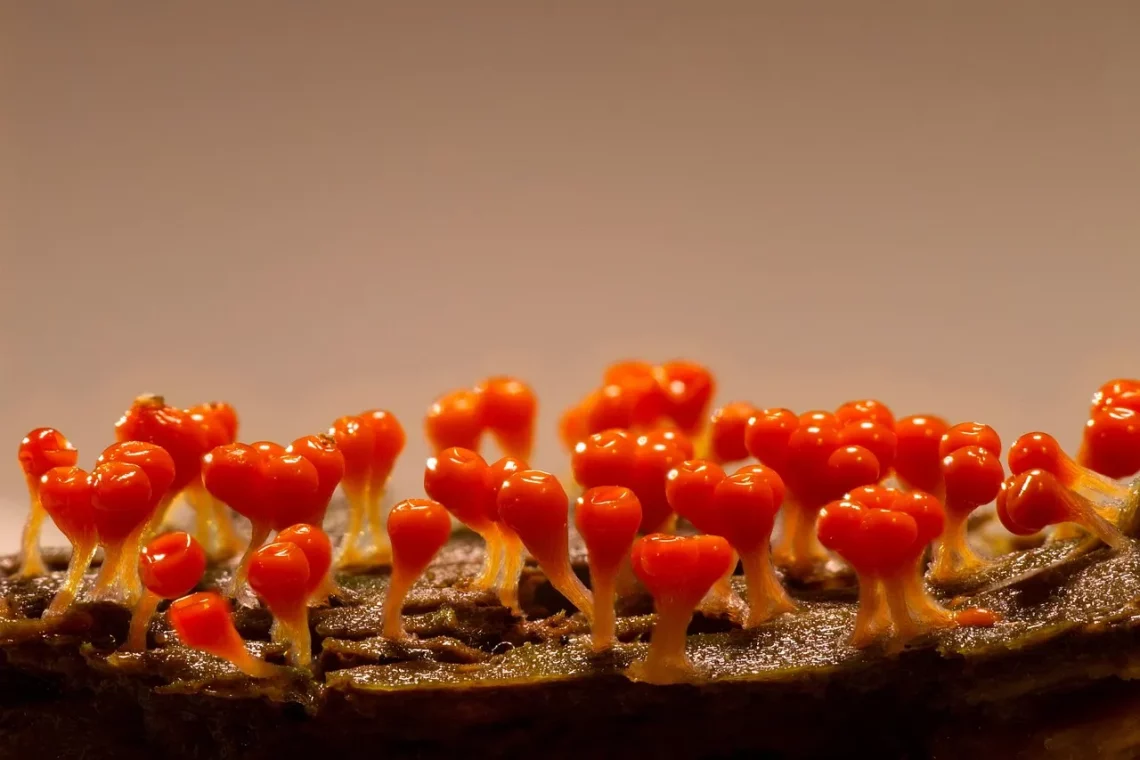
The Fascinating World of Orange Slime: A Colorful Exploration
The vibrant and often peculiar world of slime molds has intrigued scientists and nature lovers alike for centuries. Among the myriad of colors found in nature, orange slime molds stand out not only for their striking appearance but also for their unique ecological roles and fascinating life cycles. These organisms, often mistaken for fungi, belong to a separate group of life forms that exhibit both animal and plant characteristics. They thrive in a variety of environments, from damp woodland floors to decaying logs, showcasing their adaptability and resilience.
Orange slime molds, in particular, capture the imagination with their bright hues that can vary from deep tangerine to soft apricot. Their colors can signal various stages of development and are influenced by environmental factors such as moisture and temperature. As they progress through their life cycles, they engage in a remarkable transformation that highlights the complexity of life at the microscopic level. This article delves into the captivating universe of orange slime molds, exploring their biology, ecological significance, and the mysteries that continue to surround them.
The Biology of Orange Slime Molds
At the heart of understanding orange slime molds lies their unique biological classification. Unlike traditional fungi, slime molds belong to the kingdom Protista. This group includes a diverse set of organisms, including algae and protozoans. The life cycle of slime molds is fascinating and complex, characterized by distinct stages that can include unicellular amoebae and multicellular fruiting bodies.
The most commonly observed stage of slime molds, including those that are orange, is the plasmodium stage. This is a large, multinucleate mass of cytoplasm that moves in a flowing manner, searching for food sources such as decaying plant matter. During this stage, the orange color becomes prominent, adding a vibrant splash to the forest floor. This color is due to carotenoids, pigments that play a role in photosynthesis and can also protect the organism from UV radiation.
As the plasmodium continues to feed and grow, it eventually enters the fruiting stage. Here, the slime mold forms spore-producing structures, often taking on a distinct shape that can resemble small, fruiting bodies or stalks. These structures are crucial for reproduction. When conditions become unfavorable, such as a lack of moisture or food, the plasmodium will produce spores that can survive harsh environments. These spores are then dispersed by wind or water, allowing for the colonization of new habitats.
The fascinating biology of orange slime molds illustrates their adaptability and resilience in various ecosystems. Their ability to thrive under different conditions makes them an essential part of the decomposition process, breaking down organic material and returning nutrients to the soil. This role not only supports plant life but also sustains a variety of organisms within the ecosystem.
Orange slime molds play a vital role in their ecosystems, acting as decomposers that contribute to nutrient cycling. As they feed on decaying organic matter, they help break down complex substances into simpler forms that can be utilized by plants and other organisms. This process is crucial for maintaining soil health and fertility, supporting the growth of vegetation in forested areas and beyond.
Furthermore, slime molds serve as an indicator of environmental health. Their presence often signifies a rich, moist ecosystem, which can be a sign of a balanced environment. Conversely, a decline in slime mold populations can indicate changes in habitat quality, such as increased pollution or habitat destruction. As such, monitoring these organisms can provide valuable insights into the ecological state of an area.
In addition to their role as decomposers, orange slime molds also interact with various organisms in their environments. They can serve as food for other creatures, such as insects and small mammals, forming an essential part of the food web. Their unique life cycle and reproductive strategies also contribute to biodiversity, as they can quickly colonize new areas and adapt to changing conditions.
Moreover, slime molds have garnered interest in research due to their unique problem-solving abilities. Studies have shown that slime molds can navigate complex mazes and find the most efficient paths to food sources, demonstrating a level of intelligence that challenges traditional notions of cognition. This intriguing behavior offers insights into the evolution of intelligence and social behavior in living organisms, positioning slime molds as a fascinating subject for scientific inquiry.
The vibrant colors and dynamic behaviors of orange slime molds have made them a popular subject of study and fascination among nature enthusiasts and scientists alike. Observing these organisms in their natural habitat can be an enchanting experience, revealing the hidden wonders of the natural world. Whether you are a casual hiker or a dedicated mycologist, encountering slime molds can spark curiosity and a deeper appreciation for biodiversity.
One of the most exciting aspects of observing slime molds is their rapid transformation. Under the right conditions, you can witness the plasmodium stage flowing across the forest floor, changing shape as it moves. This dynamic movement is not only visually captivating but also serves as a reminder of the unseen processes that occur in nature.
Photographers and nature lovers often seek out slime molds to capture their beauty. The bright orange color stands out against the greens and browns of the forest floor, creating a stunning contrast that can be both artistic and educational. Documenting the growth and changes in slime molds can provide valuable data for citizen scientists and contribute to ongoing research efforts.
For those interested in studying slime molds, there are various resources available, including guides and online communities. Engaging with others who share a passion for these organisms can enhance the learning experience and foster a sense of connection to the natural world. Workshops and field trips can also provide hands-on opportunities to observe and learn about slime molds in detail.
Ultimately, the fascination with orange slime molds lies not only in their striking appearance but also in their ecological importance and the mysteries they present. By exploring the world of slime molds, we gain insights into the complexity of life and the intricate relationships that sustain our ecosystems.
In conclusion, the vibrant world of orange slime molds is a testament to nature’s diversity and complexity. From their unique biological characteristics to their ecological significance, these organisms offer a glimpse into the fascinating interplay of life forms in our environment. Whether through scientific study or casual observation, there is much to learn and appreciate about these colorful denizens of the forest floor.
**Disclaimer:** This article is for informational purposes only and should not be considered medical advice. Always consult a healthcare professional for any health-related concerns or conditions.




